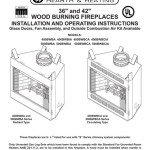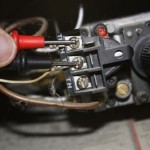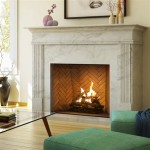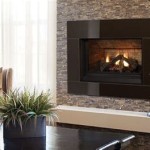Fireplace Inserts: Wood Burning Installation Guide
Wood burning fireplace inserts provide an efficient and aesthetically pleasing method for heating a home. Unlike traditional open fireplaces, inserts are designed to fit directly into an existing fireplace opening, offering improved heating efficiency and reduced energy consumption. This article provides a comprehensive overview of wood burning fireplace insert installation, encompassing key considerations, preparation steps, the installation process itself, and crucial safety measures.
Before embarking on the installation process, it's essential to understand the fundamental differences between open fireplaces and fireplace inserts. Traditional fireplaces draw combustion air from the room, leading to significant heat loss up the chimney. This negative pressure often results in cold drafts and reduced heating efficiency. Fireplace inserts, on the other hand, are closed combustion systems. They draw air from outside the living space or are designed with a closed combustion system to maximize heat transfer and minimize heat loss. The insert's firebox is typically constructed from cast iron or steel, materials known for their excellent heat retention and radiative properties. By converting an existing fireplace into a more efficient heating appliance, homeowners can significantly reduce their heating bills and enjoy a warmer, more comfortable living environment.
Key Point 1: Pre-Installation Assessment and Preparation
The initial phase of wood burning fireplace insert installation is a thorough assessment of the existing fireplace and chimney system. This involves verifying the suitability of the fireplace structure, chimney condition, and adherence to local building codes and regulations.
Fireplace Structure Integrity: A professional inspection is critical to determine the structural integrity of the existing fireplace. Cracks, crumbling mortar, or other signs of damage can compromise the safety and efficiency of the insert installation. Any necessary repairs must be completed before proceeding. The fireplace hearth should also be checked to ensure it extends far enough into the room to provide adequate protection from embers or falling debris. The dimensions of the fireplace opening must be accurately measured to ensure the selected insert will fit properly. Manufacturers provide specific dimension requirements for their inserts, and exceeding these limits can lead to installation challenges or safety hazards.
Chimney Inspection and Cleaning: The chimney is a critical component of the fireplace insert system. A professional chimney sweep should conduct a thorough inspection to identify any creosote buildup, blockages, or structural deficiencies. Creosote is a highly flammable byproduct of wood combustion, and its accumulation can significantly increase the risk of chimney fires. Blockages, such as bird nests or debris, can impede proper ventilation and lead to carbon monoxide buildup inside the home. If the chimney is damaged or deteriorated, it may need to be repaired or relined before the insert can be installed. Modern codes often require a stainless steel liner to be installed within the existing chimney, particularly when converting from an open fireplace to a closed combustion system. The liner provides a smooth, continuous flue that improves draft and contains combustion byproducts, preventing them from seeping into the masonry.
Code Compliance and Permits: Prior to installation, it is essential to research and comply with all applicable local building codes and regulations. Many jurisdictions require permits for fireplace insert installations, and these permits often involve inspections to ensure the installation meets safety standards. Contacting the local building department or a qualified contractor is recommended to obtain the necessary permits and understand the specific requirements for the area. Failure to comply with building codes can result in fines, delays, and potential safety hazards.
Choosing the Right Insert: Selecting the appropriate wood burning fireplace insert is crucial. Inserts are rated by their heating capacity (measured in BTUs), firebox size, and efficiency. The size of the space to be heated, the climate, and the homeowner's heating preferences should all be considered when choosing an insert. It’s imperative to choose an EPA-certified insert, ensuring it meets stringent emissions standards and burns wood more cleanly and efficiently. Consult with a reputable fireplace retailer or installer to determine the best insert for the specific needs and application.
Key Point 2: The Installation Process: A Step-by-Step Guide
The installation process requires careful attention to detail and adherence to the manufacturer's instructions. While some homeowners may attempt a DIY installation, it is strongly recommended to hire a qualified and certified professional installer. Improper installation can lead to safety hazards, reduced efficiency, and voided warranties.
Preparing the Fireplace Opening: The existing fireplace opening must be prepared to accommodate the new insert. This may involve removing existing fireplace accessories, such as grates or screens. The firebox should be thoroughly cleaned to remove any ash, soot, or debris. The dimensions of the opening should be double-checked to ensure the insert will fit properly. Minor modifications to the opening may be necessary, such as chipping away excess mortar or installing a surround to fill any gaps.
Installing the Chimney Liner: As previously mentioned, a stainless steel chimney liner is often required or recommended for wood burning fireplace insert installations. The liner is typically installed by dropping it down the chimney from the top. The installer will then connect the liner to the insert's flue collar. The liner should be properly insulated to prevent heat loss and improve draft. Insulation can be achieved using a variety of materials, such as mineral wool or ceramic fiber blankets. Properly sealing the liner at the top and bottom is crucial to prevent combustion byproducts from escaping into the living space or the chimney structure.
Positioning and Securing the Insert: Once the chimney liner is installed, the fireplace insert can be carefully positioned into the fireplace opening. The insert should be centered and leveled to ensure proper operation and aesthetics. The manufacturer's instructions will specify the recommended clearances to combustible materials. These clearances must be strictly adhered to in order to prevent fire hazards. In some cases, a non-combustible hearth extension may be required to provide adequate protection from embers or radiant heat. The insert is typically secured in place using screws or bolts. Some installations may require a custom surround to be fabricated to fill any gaps between the insert and the fireplace opening.
Connecting the Insert to the Chimney Liner: The connection between the insert's flue collar and the chimney liner must be airtight. This is typically achieved using a stove pipe adapter and high-temperature sealant. The connection should be carefully inspected to ensure there are no leaks. Any gaps or cracks should be sealed to prevent combustion byproducts from escaping into the living space. A draft test should be performed to verify that the chimney is drawing air properly. This can be done using a smoke pencil or a manometer. A poor draft can lead to smoke spillage and carbon monoxide buildup.
Electrical Connections (If Applicable): Some wood burning fireplace inserts include features such as blowers or electronic ignition systems that require electrical connections. These connections must be made by a qualified electrician in accordance with local electrical codes. A dedicated circuit may be required to provide adequate power to the insert. The wiring should be properly grounded and protected from damage. It is essential to disconnect the power supply before performing any electrical work on the insert.
Key Point 3: Safety Considerations and Post-Installation Procedures
Safety is paramount when installing and operating a wood burning fireplace insert. Proper installation, regular maintenance, and adherence to safety guidelines are crucial to prevent accidents and ensure the longevity of the system.
Carbon Monoxide Detectors: Carbon monoxide (CO) is a colorless, odorless, and deadly gas produced by incomplete combustion. It is essential to install carbon monoxide detectors on every level of the home, particularly near sleeping areas. Test the detectors regularly to ensure they are functioning properly. Replace the batteries in the detectors at least twice a year. If the CO detector alarms, evacuate the home immediately and call the fire department.
Smoke Detectors: Smoke detectors are equally important for fire safety. Install smoke detectors on every level of the home, particularly near sleeping areas. Test the detectors regularly to ensure they are functioning properly. Replace the batteries in the detectors at least twice a year. Develop and practice a fire escape plan with all members of the household.
Operating the Insert Safely: Familiarize yourself with the manufacturer's instructions for operating the wood burning fireplace insert. Use only seasoned, dry firewood. Never burn treated wood, painted wood, or trash. These materials can release toxic fumes and damage the insert. Start small fires and gradually increase the amount of wood as needed. Avoid overloading the firebox, as this can lead to overheating and damage. Never leave the insert unattended while it is burning. Keep flammable materials, such as curtains, furniture, and newspapers, away from the insert. Use a fireplace screen to prevent embers from escaping into the room.
Regular Maintenance and Cleaning: Regular maintenance and cleaning are essential for ensuring the safe and efficient operation of the wood burning fireplace insert. Schedule a professional chimney sweep inspection and cleaning at least once a year, or more frequently if needed. Remove ash from the firebox regularly. Inspect the chimney liner for any signs of damage or deterioration. Replace any worn or damaged parts promptly. By performing regular maintenance, homeowners can extend the life of their fireplace insert and prevent costly repairs.
Burn Seasoned Wood: The type of wood burned dramatically affects the efficiency and safety of the fireplace insert. Seasoned wood, which has been properly dried for at least six months, burns hotter and cleaner than green or wet wood. Green wood contains a higher moisture content, leading to incomplete combustion and increased creosote buildup. Creosote is a highly flammable substance that can accumulate in the chimney and increase the risk of chimney fires. Seasoned wood should have a moisture content of less than 20%. Proper storage of firewood is also important. Store firewood in a dry, well-ventilated area, away from the house.
By adhering to these guidelines, homeowners can ensure a safe and efficient wood burning fireplace insert installation, enhancing the comfort and value of their homes while minimizing the risks associated with wood burning appliances. While this guide provides comprehensive information, consulting with qualified professionals is always recommended for specific installation needs and local code requirements.
Wood Stoves And Fireplaces How To Install A Burning Fireplace Insert Hearth Com Forums Home

How To Install A Fireplace Insert Diy Save Money

Fireplace Insert Installation Wood Burning Inserts

Fireplace Insert Installation Wood Inserts Gas Pellet And Electric

Why Get A Fireplace Insert Wood Gas Inserts In Tn Al

Installing A Volgalzang Colonial Wood Burning Stove Insert

Wood Burning Fireplace Inserts Insert Installation

Convert To Gas Installing Fireplace Inserts Doctor Flue

Why A Wood Burning Fireplace Insert Bethesda Md Service

Best Fireplace Insert Repair Installs Ton Service
Related Posts








